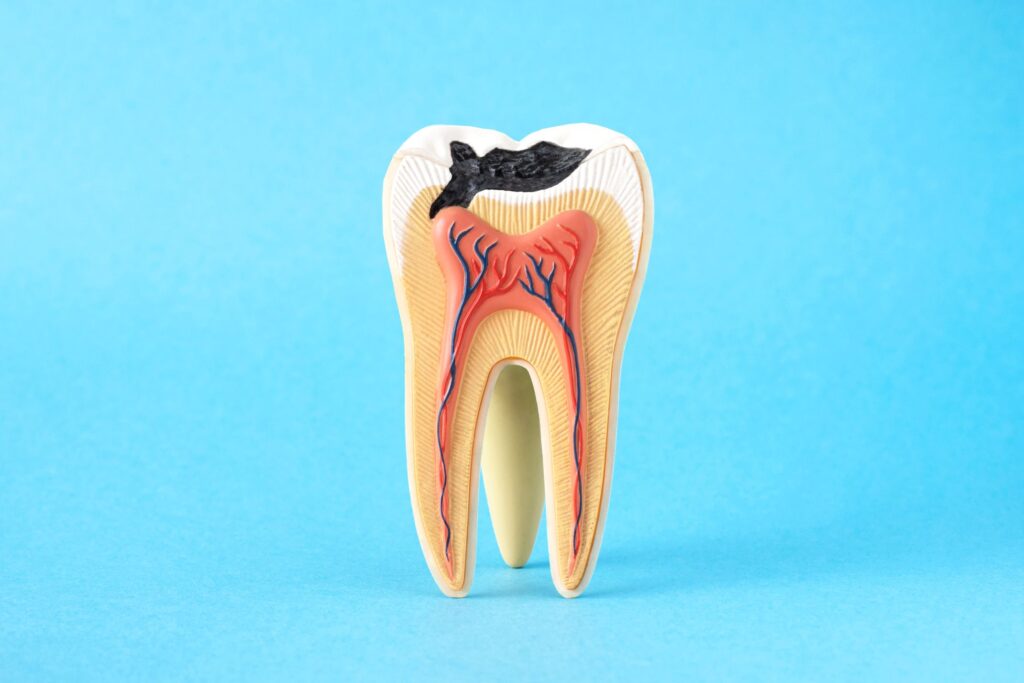
Did you know that the American Dental Association recommends visiting your provider every six months for a routine checkup and cleaning? Consistent appointments allow your dentist to monitor your condition to identify and treat areas of concern, like thinning enamel, before they progress.
However, if it’s been a while since your last visit, you might already have developed a cavity and aren’t aware. Continue reading to learn 3 indicators your provider looks for that let them know you developed decay that needs a filling!
Sign #1: Sensitivity
Caries happen when bacteria in your mouth create acids that erode the protective outer layer of your teeth, the enamel. From there, they can irritate and infect the tender pulp and nerves inside. This can trigger mild to severe aches, depending on your condition.
When it comes to your grin, no pain is considered normal. You might have a cavity if you feel a sharp, tingling, or sore sensation, especially when biting into anything overly hot or cold. Although this can usually be repaired with a color-matched filling made from durable composite resin, if your tooth is too damaged, you might require a root canal procedure followed by a dental crown to restore your smile.
Sign #2: Discoloration
Although brushing and flossing twice daily at home are essential to keeping caries and gum disease at bay, there’s no guarantee that you won’t get them. Even those who are dedicated to removing plaque and bacteria from their mouths consistently might develop an issue between their teeth, behind their molars, or in some other location that’s hard to see by yourself.
Once you arrive at your dentist’s office for your appointment, they’ll examine your mouth for potential problems. Tooth decay wears down your enamel, revealing the darker layers underneath. That means your provider can verify whether teeth are health by their shade. If they find spot dark spots or deep discoloration, they may probe the area to verify whether it’s a stain, tooth decay, or some other issue.
Sign #3: Rough Edges
Enamel typically feels smooth to the touch, but if the surface material has been injured, it can create jagged edges. You might not be able to visually see these fractured surfaces, but if you’ve noticed that your floss thread tears when you reach a certain tooth, there could be a cavity.
Your provider will gently probe your teeth with special instruments to identify the strength of your enamel. They might also take X-rays to see beneath the surface of your gums to ensure the problem hasn’t extended (or originated) in the roots.
Now that you know how cavities present themselves, you can call your dentist as soon as you notice the signs!
Meet the Author
Dr. Robert Sanker is an expert prosthodontist with decades of experience helping families build and maintain happy, healthy grins. He earned his dental degree from the Georgetown University School of Dentistry and became a Specialist in Prosthodontics at the Medical College of Virginia. Now, he provides a comprehensive menu of services to meet your unique needs at one convenient location, including tooth-colored fillings for cavities. He has an in-house laboratory containing lifelike, customizable materials to create beautiful restorations to repair decay while enhancing your appearance. You can request an appointment on the website or call (301) 468-5566.
